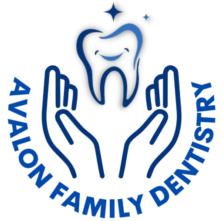Dental Extraction
A dental extraction is a process whereby one or multiple teeth are removed from their socket through a surgical procedure. The process is essential for many causes, such as tooth decay, gum disease, infection, crowding, damage, or wisdom tooth impaction. A local anesthetic is often used to numb the area before the extraction surgery. An elevator is then used to loosen the tooth so that it can be removed using forceps. Following the extraction, the dentist may give recommendations for post-operative care and may also dispense painkillers or antibiotics to help with any discomfort or lower the likelihood of infection.

Reasons for Dental Extraction
- Pain Relief:
Extracting a tooth that is causing you pain or discomfort can provide relief.
Extracting an unhealthy or infected tooth can benefit your dental health and stop the illness from spreading to your other teeth or other parts of your body.
- Speaking Improvement:
Crowded or misaligned teeth can be removed to enhance speech.
- Improved Appearance:
Misshapen or discolored teeth can be removed to make a smile look better.
- Better Oral Hygiene:
Having impacted wisdom teeth removed together with other hard-to-clean teeth can lead to better oral hygiene and a lower risk of gum disease.
- Reduce Crowding:
By making room for additional teeth to emerge properly, tooth extractions can ease crowding and enhance the quality of the bite.
- Orthodontic Treatment
Orthodontic treatment is a type of dental care that is geared toward realigning the jaws and teeth. The purpose of orthodontic treatment is to establish a balanced, attractive, and functional bite.
The following are some ways that extraction can prepare for orthodontic treatment:
- Providing Space:
Removing some teeth from the mouth can make room for other teeth to move up to their correct positions more easily.
- Improving the Bite:
By allowing the jaw to close properly and lowering the risk of tooth grinding or jaw pain, removing some teeth can improve the bite.
- Getting Ready for Orthodontic Appliances:
By having some teeth extracted, it will be simpler to place orthodontic appliances like braces or aligners and apply the required force to move the teeth.
Wisdom Teeth Extraction
The third and final set of molars, or wisdom teeth, usually erupts in the late teens or early twenties. They are situated behind the second molars in the back of the mouth and are also referred to as the third molars. Wisdom teeth can result in several issues, including crowding, impaction, pain, decay, and gum disease, all of which may need their removal. The dentist will assess each patient’s individual needs by conducting an examination using digital or panoramic x-rays to determine the current position and impact the wisdom teeth have on surrounding teeth and oral hygiene.
Wisdom Teeth Impaction
Impaction of a wisdom tooth describes a situation in which the tooth is unable to fully emerge from the gum and instead becomes trapped or stuck. Three different wisdom tooth impaction conditions exist:
- Soft tissue impaction
When a wisdom tooth becomes partially or completely covered by soft tissue, such as the cheeks or gums, it is referred to as a soft tissue impaction. The wisdom tooth may push against the soft tissue in this type of impaction, resulting in discomfort, swelling, and other oral health issues. Additionally, soft tissue impaction can make it harder to properly clean the area, which raises the risk of infection or gum disease.
- Partial Bony Impaction
When a wisdom tooth is slightly covered by the jawbone and partially emerges through the gum tissue, the condition is referred to as partial bony impaction. The wisdom tooth may press against the neighboring teeth or jawbone in this type of impaction, resulting in acute pain.
- Complete Bony Impaction
Wisdom tooth impactions such as complete bony occur when the entire tooth is covered in bone and is invisible. The wisdom tooth is unable to fully erupt through the gum and becomes impaled beneath the jawbone in this type of impaction. The tooth may not function properly as a result.
What is the Recovery Time from Wisdom Tooth Extraction?
Each person’s recovery time following wisdom tooth removal is unique and depends on a few variables, including the difficulty of the extraction, general health, and appropriate post-operative treatment. Swelling and discomfort can persist anywhere from a few days to a week, and complete recovery might take anywhere from a few weeks to a few months. It’s crucial to adhere to your dentist’s post-operative care instructions, which may include eating soft foods, refraining from using straws, and taking painkillers as directed.
It’s typical to feel some pain, inflammation and bleeding for the first 24 to 48 hours. After that, the discomfort and swelling ought to gradually go away. Within a few days, you might be able to resume your regular activities, but for the first week, it’s better to stay away from anything physically demanding. Keeping follow-up consultations with your dentist is essential for ensuring appropriate recovery and monitoring the healing process.



